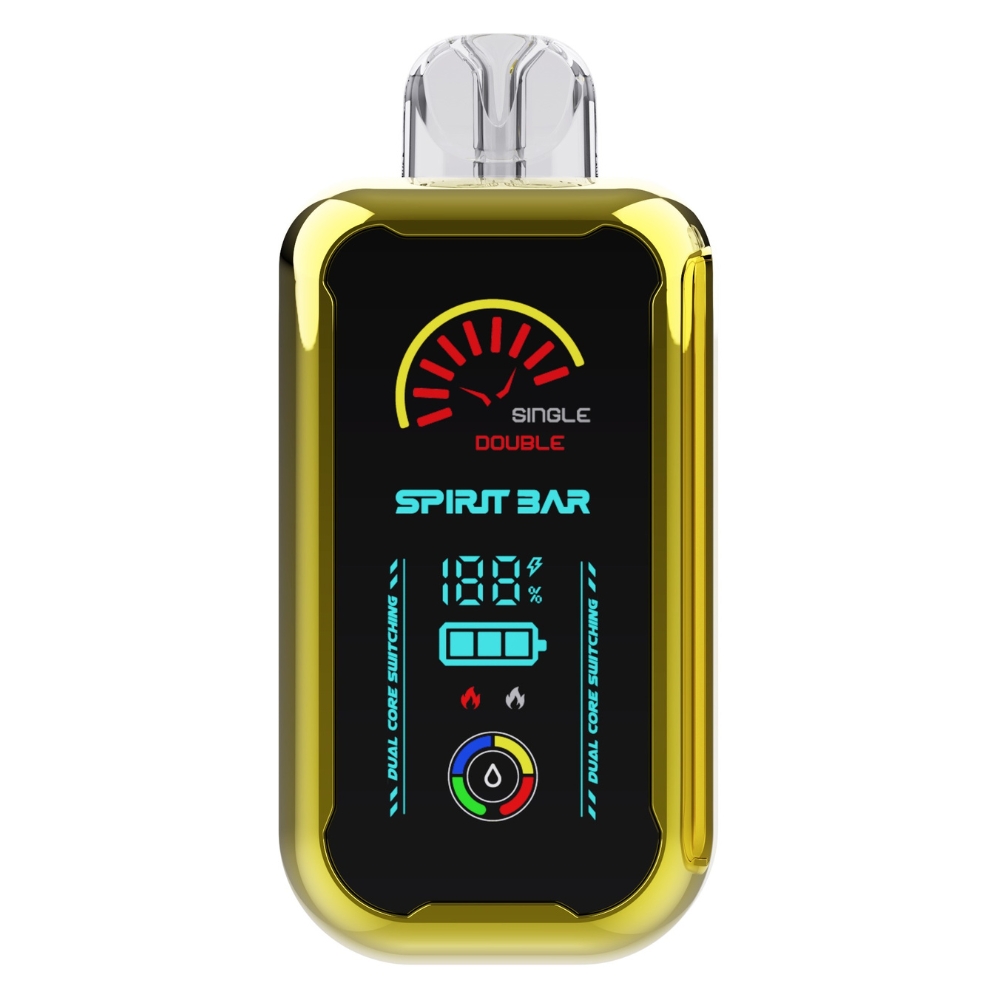Is There an Alarm for Vaping?

Are you concerned about teen vaping in your home or workplace? If so, you may be wondering if there is an alarm for vaping that can help you detect and deter this behavior. The answer is yes, there are alarms and sensors available that can detect vaping and alert you to its presence.
Vape detectors use advanced technology to monitor the air for the presence of vapor or smoke produced by e-cigarettes or other vaping devices. When the detector senses the presence of vaping, it can trigger an alarm or notification to alert you to the behavior. Some detectors even have the ability to send real-time alerts to your phone or other devices, allowing you to take action immediately.
If you are concerned about the health and safety risks of vaping, or if you want to prevent teen vaping in your home or workplace, a vape detector may be a valuable investment. With the ability to detect vaping and alert you to its presence, you can take proactive steps to protect yourself and others from the harmful effects of this behavior.
Understanding Vaping and Its Effects
Vaping is a term used to describe the act of inhaling vapor produced by an electronic cigarette or other similar device. It has become increasingly popular in recent years, especially among young people. In this section, we will explore what vaping is and the potential health implications associated with it.
What is Vaping?
Vaping involves inhaling an aerosol, which is produced by heating a liquid in a device. The liquid typically contains nicotine, flavorings, and other chemicals. Although many people believe that vaping is a safer alternative to smoking traditional cigarettes, there is still much debate over its safety.
Health Implications of Vaping
Research has shown that vaping can have negative health effects, including:
- Damage to the lungs: Vaping can cause damage to the lungs, just like smoking. The aerosol produced by vaping can contain harmful particles that can damage the lungs over time. This can increase the risk of developing lung diseases such as emphysema and chronic bronchitis.
- Addiction to nicotine: Many vaping liquids contain nicotine, which is highly addictive. Nicotine can cause a range of health problems, including an increased risk of heart disease and stroke.
- Exposure to harmful chemicals: Vaping liquids can contain a range of harmful chemicals, including formaldehyde and acrolein. Exposure to these chemicals can increase the risk of developing cancer and other health problems.
In conclusion, vaping is a popular activity that can have negative health implications. While it may seem like a safer alternative to smoking traditional cigarettes, it is important to understand the potential risks associated with vaping.
The Need for an Alarm for Vaping
As vaping becomes more popular, concerns about its safety and impact on public health have grown. Schools, public places, and workplaces are increasingly looking for ways to detect and prevent vaping. This has led to the development of alarms specifically designed to detect vaping. In this section, we will discuss the need for an alarm for vaping, the risks associated with uncontrolled vaping, and the benefits of vaping regulation.
Risks Associated with Uncontrolled Vaping
Uncontrolled vaping can pose several risks to individuals and the environment. The most significant risk is the potential for exposure to harmful chemicals. Vaping devices produce aerosols that contain nicotine, heavy metals, and other toxic chemicals. These aerosols can be inhaled by bystanders, leading to secondhand exposure. Secondhand exposure to vaping aerosols can cause respiratory problems, headaches, and other health issues.
Uncontrolled vaping can also lead to fire hazards. Vaping devices use batteries that can overheat and catch fire if not handled properly. There have been several incidents of vaping devices exploding, causing serious injuries and property damage. An alarm for vaping can help detect these hazards and prevent accidents.
Benefits of Vaping Regulation
Regulating vaping can help reduce the risks associated with uncontrolled vaping. Vaping regulations can limit the use of vaping devices in public places, schools, and workplaces. This can reduce secondhand exposure to vaping aerosols and prevent fire hazards. Vaping regulations can also help prevent minors from accessing vaping devices.
An alarm for vaping can help enforce vaping regulations. By detecting vaping aerosols, an alarm can alert authorities to potential violations of vaping regulations. This can help deter individuals from vaping in prohibited areas and prevent minors from accessing vaping devices.
In conclusion, the need for an alarm for vaping has become increasingly important as vaping continues to grow in popularity. Uncontrolled vaping can pose several risks to individuals and the environment, while regulating vaping can help reduce these risks. An alarm for vaping can help enforce vaping regulations and prevent accidents.
Existing Solutions
Current Technological Interventions
Several technological interventions have been developed to detect vaping in public spaces, particularly in schools. One such solution is the HALO IoT vape and multi-sensor, which can identify vaping in privacy areas such as bathrooms, as well as detect other health and security threats. This device can also monitor air quality and detect chemicals, gas, keyword calls for help, loud sounds, and gunshots. The HALO IoT vape and multi-sensor is an ideal solution for educators to monitor student behavior and ensure a safe learning environment.
Another solution is the Triton Sensors Vape Detector, which is a 3D vape detector that can be installed in bathrooms to report different disturbances, including vaping. These devices are easy to operate, install, and inexpensive compared to similar products. According to the manufacturers, schools can save over $3,000 by buying these devices.
Limitations of Existing Solutions
Despite the advancements in technology, existing solutions have limitations. Optical and ionization alarms may sound if there is a large enough cloud of vapor, but it is unlikely that a Juul or similar vape will produce enough vapor to trigger such an alarm. Instead, a silent alarm goes off, and a notification is sent to the appropriate authorities.
Furthermore, some devices may produce false alarms due to their high sensitivity. This can lead to unnecessary disruptions and inconvenience for students and staff. Additionally, some devices may be too expensive for schools with limited budgets, making it difficult for them to invest in vaping detection technology.
In conclusion, while there are existing solutions to detect vaping in public spaces, they have their limitations. Schools should carefully consider their options and choose a solution that best fits their needs and budget.
The Concept of an Alarm for Vaping
Vaping has become a growing concern in public places, especially where smoking is prohibited. As a result, some organizations have developed vape detectors that can be used to detect vaping and alert authorities. These detectors are designed to work in a similar way to smoke detectors, but they detect the vapor produced by e-cigarettes instead of smoke.
How it Works
Vape detectors work by using sensors to detect the presence of vapor in the air. When vapor is detected, the detector sends a signal to a central monitoring system, which can then alert authorities. Some vape detectors also have an audible alarm, which can be turned on or off.
Potential Benefits
Vape detectors have the potential to be a useful tool in enforcing indoor vaping bans. They can help to deter people from vaping in public places, and can also help to catch those who do vape. This can be especially useful in schools, where vaping has become a growing problem.
However, it’s important to note that vape detectors are not foolproof. They can be triggered by other sources of vapor, such as humidifiers or air fresheners, and they may not be able to detect all types of vaping devices. Additionally, some people may be able to find ways to bypass the detectors, such as by using devices that produce less vapor or by vaping in areas where the detectors are not present.
In conclusion, vape detectors have the potential to be a useful tool in enforcing indoor vaping bans, but they should not be relied upon as the sole solution to the problem of vaping in public places. It’s important to continue to educate people about the dangers of vaping and to enforce existing laws and regulations.
Challenges in Implementing an Alarm for Vaping
Implementing an alarm for vaping in public places such as schools, hospitals, and restaurants presents several challenges. While the technology exists to detect vaping, there are also societal and ethical considerations that must be taken into account.
Technological Hurdles
The technology for detecting vaping exists, but it is not foolproof. Vape detectors use sensors to detect the chemicals in e-cigarette vapor, but they can also be triggered by other sources such as air fresheners, perfumes, and cleaning products. False positives can lead to unnecessary alarms and inconvenience for those nearby.
Additionally, the small size of e-cigarettes and the ability to easily conceal them presents a challenge for detection. Vape detectors must be strategically placed in areas where vaping is likely to occur, such as bathrooms and outdoor areas.
Societal Acceptance
The implementation of an alarm for vaping can also face societal resistance. Some may view it as an invasion of privacy or an infringement on personal freedom. There may be concerns about the effectiveness of such alarms in deterring vaping, as well as the potential for false accusations and discrimination.
Furthermore, the use of vape detectors in schools and other public places raises questions about the appropriate response to vaping. Should offenders be punished or offered support for quitting? What role should parents and teachers play in addressing the issue?
Overall, implementing an alarm for vaping presents both technological and societal challenges. While the technology exists to detect vaping, it must be used in a way that balances privacy and personal freedom with public health concerns.
Future Prospects
As the vaping industry continues to grow, there are several future prospects to consider. Two significant areas of development include technological advancements and policy changes.
Technological Advancements
The vaping industry has already seen significant technological advancements, including the development of pod systems, temperature control, and customizable settings. In the future, we can expect even more innovations, such as:
- Improved battery life and charging capabilities
- More compact and discreet devices
- Enhanced flavor and vapor production
- Integration with smart devices and apps
These advancements will likely make vaping even more accessible and enjoyable for users.
Policy Changes
As the vaping industry continues to grow, we can also expect policy changes to reflect the evolving landscape. Some potential policy changes include:
- Increased regulation and oversight from governments and health organizations, including restrictions on marketing and advertising, flavor bans, and requirements for age verification.
- The potential for vaping to be included in smoke-free laws and regulations, which could impact where and when vaping is allowed.
- The potential for increased taxes on vaping products, which could make them more expensive for consumers.
Overall, the future of vaping is likely to be shaped by a combination of technological advancements and policy changes. As a vaper, it is essential to stay informed about these developments and how they may impact your vaping experience.








